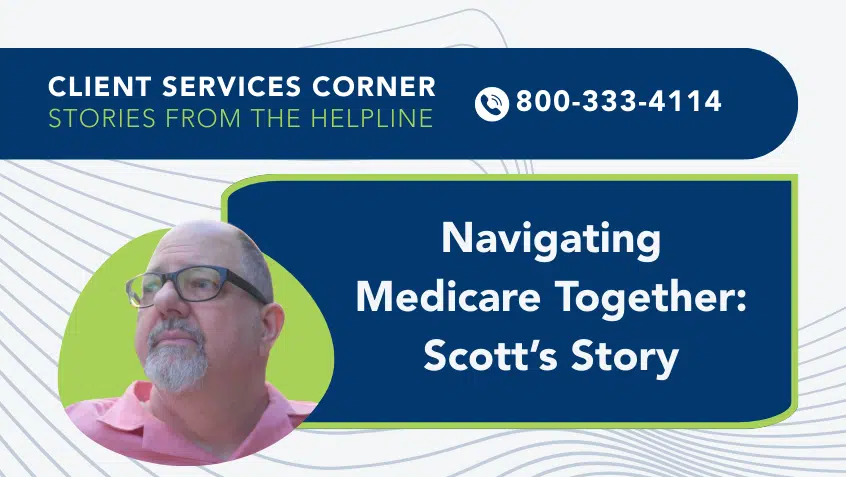Join Us Live for a Discussion on Medicare, Democracy, and the Future of Health Care
Medicare 2021 Fall Open Enrollment Resource for Journalists Released by the Medicare Rights Center
New York, NY—Medicare Fall Open Enrollment occurs from October 15 to December 7 of every year and is the time of year when people with Medicare can make unrestricted changes to their coverage options. To assist the press in their Medicare coverage, the Medicare Rights Center has developed Medicare Fall Open Enrollment: A Resource for Journalists, Fall 2021, which includes a list of upcoming changes, expert advice, and related issues of interest to people with Medicare. Also included are consumer-friendly resources that can be shared with readers.
The Medicare Rights Center, a national nonprofit consumer service organization that works to ensure access to affordable health care for older adults and people with disabilities, expects that journalists will find the resource helpful as they prepare coverage for this year’s Medicare enrollment season.
A few notable updates to consider during Fall Open Enrollment include the following:
- The base premium for a Medicare Part D prescription drug plan is $33.37 per month in 2022 (up from $33.06 in 2021). However, premiums for specific plans and regions vary from year to year and may be higher or lower than this amount. It is important for people with Medicare to examine their Annual Notice of Change (ANOC) carefully to determine if and how their plan’s costs or benefits are changing, and if it makes sense to explore other options.
- In 2022, Medicare beneficiaries will enter the coverage gap after their total drug costs reach $4,430 (up from $4,130 in 2021). Once in the coverage gap, beneficiaries have a 75% discount on the cost of their brand-name and generic drugs. They will reach catastrophic coverage after paying $7,050 out of pocket on drugs (up from $6,550 in 2021). During this period, beneficiaries pay significantly lower copayments or coinsurance for covered drugs.
- Original Medicare Part B covers COVID-19 vaccines, regardless of whether you have Original Medicare or a Medicare Advantage Plan. A beneficiary will owe no cost-sharing (deductibles, copayments, or coinsurance).
- COVID-19 testing is covered under Medicare Part B. A beneficiary pays nothing for the test if they have Original Medicare and see a participating provider, or if they have a Medicare Advantage Plan and see an in-network provider.
- Medicare generally only covers telehealth in limited situations but has expanded coverage and access during the COVID-19 public health emergency. During this time, Medicare covers hospital and doctors’ office visits, behavioral health counseling, preventive health screenings, and other visits via telehealth in settings that include a beneficiary’s home. Standard cost-sharing may apply. If a beneficiary has a Medicare Advantage Plan, they should contact their plan to learn about its costs and coverage rules.
Telehealth services generally require both audio and video, but certain telehealth services can be delivered using only audio. These services include some behavioral health care and patient evaluation and management. If a beneficiary has questions about technology requirements for telehealth services, they should ask their provider. - During the COVID-19 public health emergency, all Medicare Advantage and Part D plans must cover up to a 90-day supply of a drug when requested. Plans cannot use quantity limits on drugs that would prevent a beneficiary from getting a 90-day supply, if the beneficiary has a prescription for that amount. However, some safety limits are still in place to prevent unsafe doses of opioids.
If a beneficiary takes medications that are covered by Medicare Part B, they should ask their doctor and plan for more information about ensuring they have an adequate supply.
Visit Medicare Interactive to learn more about Medicare coverage in response to the coronavirus public health emergency and the actions plans must take during a disaster or public health emergency.
The complete Medicare Fall Open Enrollment: A Resource for Journalists is available on the Medicare Rights Center’s website at: https://www.medicarerights.org/pdf/fall-open-enrollment-resource-for-journalists.pdf.
A consumer version of this resource is also available on Medicare Interactive. Developed by the Medicare Rights Center, Medicare Interactive (MI) is a free and independent online reference tool thoughtfully designed to help older adults and people with disabilities navigate the complex world of health insurance.
About Medicare Rights
Learn More
Media Inquiries
[email protected]





